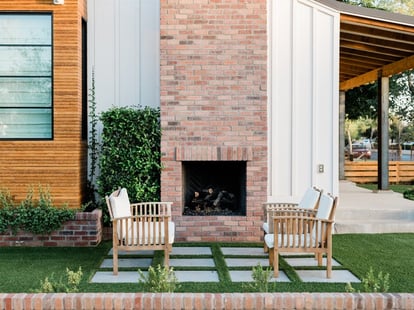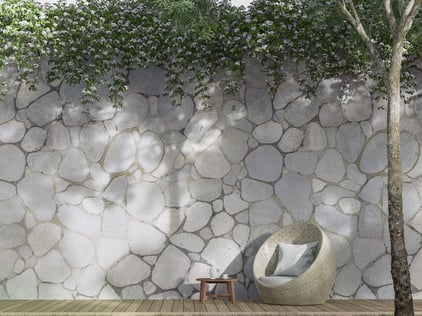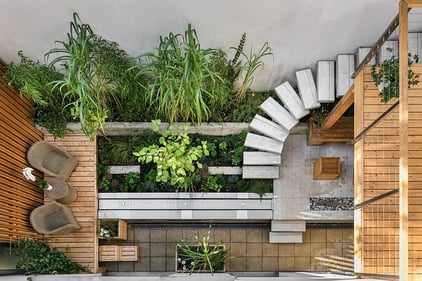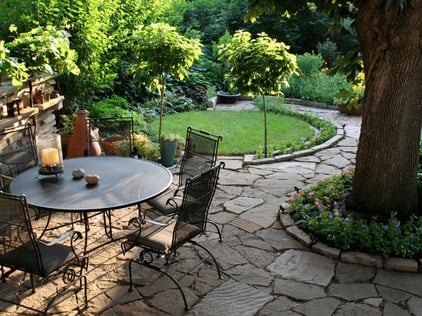
Home / Here on Earth / What is Your Landscaping Style?
Landscaping comes in many different shapes, sizes, and styles. When it comes to a landscaping style, choosing one or two styles when designing a landscape is important in order to stay consistent with the property's overall aesthetic. It's also important to understand what type of building the property has and what types of landscaping styles will best match or compliment the building. To take the cohesion of a property and pull it all together, consider the interior design and aesthetic when deciding which landscaping style to choose for your landscape. Regardless of the property type being residential, commercial, educational, and more, the landscaping style is used to create its own character and to stand out. Before getting into a few specific examples of landscaping styles, consider these three main categories: modern, contemporary, and traditional to be a starting point of which landscaping style for a property. We list different design characteristics that define these styles. If you are unsure about what your preferred landscaping style is, review some of the examples of landscaping styles mentioned here to form a perfect picture of the visual you desire.
Table of Contents
Modern Landscaping Styles
Modern landscaping styles are characterized by clean and hard lines that create a sharp and minimalistic look. The main principle of the modern landscaping style is ‘less is more.’ The materials used in the modern landscaping style are hard, like concrete and tiles, and therefore, this style incorporates concrete patios, paths, and steps. Three types of modern landscaping styles are given below.
Modern MinimalModern minimal landscaping style, as the style suggests, incorporates only the essential elements; there is no added flair in this style. The color scheme of the materials used in this style ranges from dark shades to cool grays. Plants are not planted in bunches in the modern, minimal style; they are spaced far apart or in only one area. Though the materials used in this style are few, each one is chosen and placed with a purpose while ensuring that all the elements together create a complete picture. |
|
Modern FarmhouseThe modern farmhouse combines the charm of an old farmhouse with the elements of the modern landscaping style. The planting beds have straight and clean edges without any awkward curves, and unlike the modern, minimal style, you will find more densely planted areas in this style and plants in more spaces than one. The colors of perennial blooms are muted with emphasis given to green grassy areas; climate-adapted grasses and plants are used in the modern farmhouse style. You can incorporate X-shaped or split rail fences for the rustic farmhouse look and plant trees to create focal points and provide shade. |
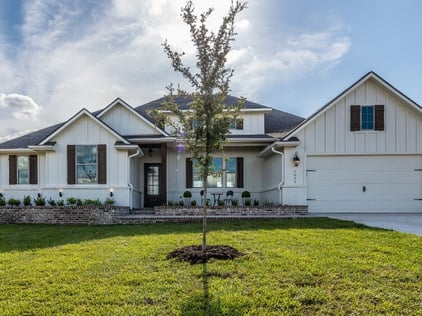 |
Modern BohemianThe modern bohemian style follows the mix-n-match policy. Warm tones and eclectic fabric and furniture create a bright and airy atmosphere. This style incorporates more elements than the others - more furniture, plants, and accessories (rugs and string lights) are used to give a full yet uncluttered feel. The planting leans more towards the informal style compared to the other modern styles mentioned above. Climate-appropriate plants are planted in bunches and strategically placed to give a natural and open feel. |
 |
Contemporary Landscaping Styles
The contemporary landscaping style is similar to the modern one, but it creates a more natural look by incorporating more wood accents than rigid lines of hardscaping. Due to the similarity between the two styles, it is easier to define the contemporary style by emphasizing what makes it different from the modern style.
The contemporary landscaping style is more informal and eclectic than the modern style, but it upholds the same principle - less is more. Nine contemporary styles are given below.
TropicalThe tropical style is characterized by its specific planting style. The plants are densely placed with vertical layering and an intermixing of various species. These plants are primarily a rich deep green in color and have large leaves. Palm trees generally take over the highest portion of the vertical layer, while shorter shrubs like hibiscus and bougainvillea add complimentary bursts of color to the landscape. These plants have high water requirements as they are adapted to tropical climates. So, make sure they can thrive in the current climate or arrange for an irrigation system to be timed correctly before planting them. |
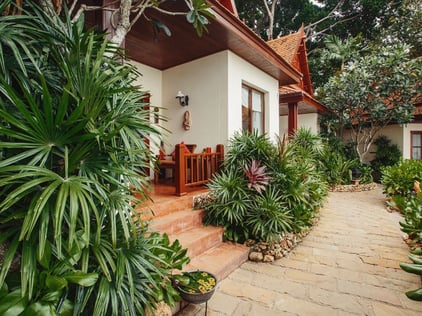 |
Family-FriendlyFamily-friendly landscaping is all about creating an outdoor space that is fun and safe for adults, children, and pets. The common areas used by people of all ages (patios, decks, lawns, etc.) should be free of poisonous plants that can harm kids and pets, have well-lit paths, slip-resistant floors to prevent accidents, and comfortable seating areas. There is no need to include plastic elements to make specific areas fun for kids. Instead, it is common to create a natural environment with a grove or a butterfly garden, anything that will feed the curiosity. Additionally, if you have friends or family who require wheelchair access, you can install ramps that connect one part of the landscape with the other. |
 |
Meadow and GrasslandThe main element of the grassland planting style is ornamental grasses, accented with perennials and a few shrubs here and there to add texture. In nature, one single grassland plant species will be found growing in large clusters; these are called drifts. To re-create the effect of drift in your landscape, plant grassland species in dense clusters and do not include too many species in a single cluster because, remember, less is more. These can either be arranged to give a natural loose look or planted in neat rows. |
 |
Edible GardensEdible gardens imply creating an aesthetically pleasing outdoor space with edible elements like herbs, fruit trees, shrubs that produce berries, etc. Plants and herbs can be grown either in raised garden beds or on the ground with clean, hardscaping edges that define the space. Consider installing raised garden beds for the herbs, as everybody can easily access these. They don’t require bending and, therefore, will not strain the knees while tending the garden. |
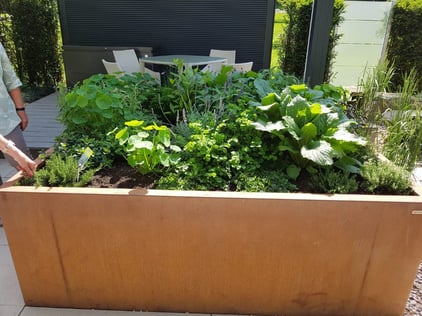 |
XeriscapeThe special feature of the xeriscape style is that the plants used in this style have extremely low water requirements. This means that they can survive on little or no irrigation, making them an ideal choice for areas that have water use restrictions, though their popularity is not limited to only these regions. Xeriscaped landscapes have low maintenance requirements as plants that are adapted to the local climate and promote biodiversity are chosen. This makes xeriscaping an environmentally-friendly style. Along with the planting, mulch and permeable gravel are used to add texture to the landscape. |
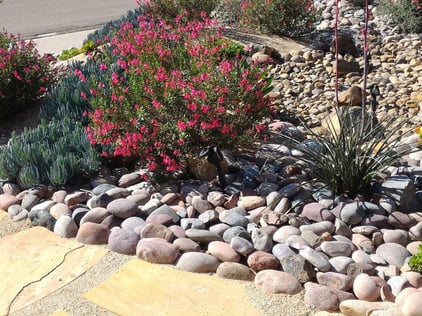 |
DesertLike xeriscaping, desert landscaping is another low-maintenance style that incorporates drought-tolerant plants. The difference is that more traditional desert plants like various types of succulents like cactus and agave are used here. A touch of color can be added to this landscape by incorporating other plants that are drought-tolerant even if they are not succulents, like autumn sage and begonia. Permeable groundcover like decomposed granite and pea gravel is used to provide a contrast of texture in this style. |
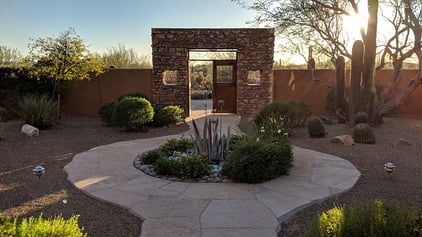 |
CoastalThe coastal landscaping style creates a breezy environment that one can experience in actual coastal regions. This style incorporates pavers of natural shapes or salvaged stone to ensure that the landscape does not look manufactured. Wooden elements like fences and steps are incorporated to replicate driftwood. Additionally, you can incorporate various ornamental grasses that sway easily in the wind if you want your landscape to have the windswept look that is commonly found near the coast. |
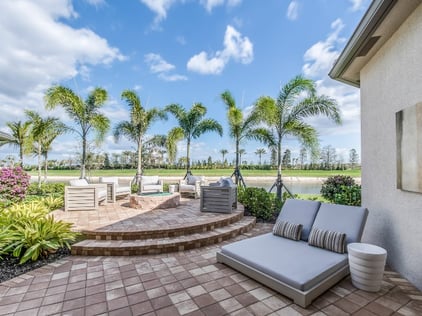 |
TransitionalThe transitional landscaping style incorporates a blend of two different landscaping styles. For example, if your partner prefers a traditional style and you prefer a contemporary style, you can incorporate elements of both these styles into your transitional landscaping style. This way, you get a stunning landscape that leaves everyone happy and gives you the best of both worlds. Transitional landscaping is extremely common in landscaping as there are some aspects on one style you like and want to incorporate into another style. For example, a family-friendly modern farmhouse. |
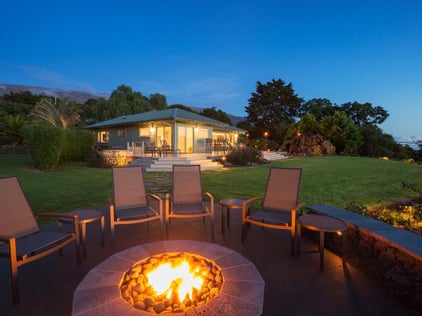 |
SouthwesternThe southwestern landscaping style is inspired by America’s southwest. Since this region is arid, a lot of desert-style elements are incorporated, like drought-tolerant plants and paths of gravel. This geographical region is sunny, and therefore, elements that provide shade are included such as pergolas and arbors. Stone walls and warm earthy tones are included in this style. Overall the look is a little spare and minimal. |
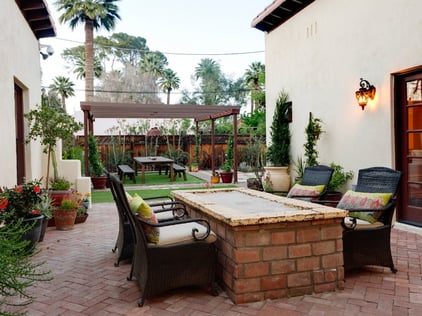 |
Traditional Landscaping Styles
Traditional landscaping design traces its origins back to 18th Century English and French gardens that surrounded the properties of the aristocracy. Today, this style has evolved to fit today's landscapes while maintaining its historically elegant look.
Traditional landscapes look polished and structured. You will find symmetrical elements, manicured garden beds, and hardscapes constructed in a timeless style. Seven traditional landscaping styles are given below.
French CountryThe French country landscape design is less structured than a formal French garden, and it is characterized by its incorporation of classic colors like mauve, pinks, green, and blue. Allow the vines to grow on the walls and twist around other elements in the landscape to create a blended look. A variety of hardscaping materials can be included in this landscaping style, like cement, decomposed granite, pavers, and gravel. French country landscapes incorporate a lot of space for kids to have fun. And remember, no French country landscape is complete without a cozy seating area from where one can peacefully take in the view. |
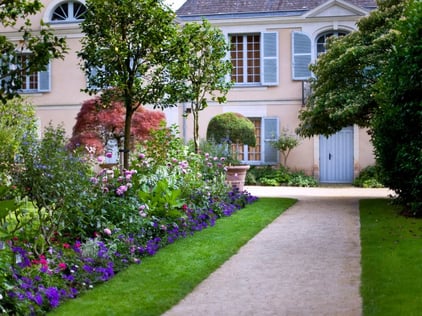 |
RusticRustic landscaping incorporates elements that give a vintage feel and a lot of character to the outdoor space. Natural elements like wood, gravel, mulch, and stone are used in this landscaping design. Rustic landscaping is all about embracing nature’s imperfections. Therefore, there is no symmetry in this style. The hedges are not pruned to a perfect rectangular shape, natural ground cover like clover and wildflowers are grown and welcomed, and regionally-adapted perennials are planted instead of exotic ones. You can also add a rustic water feature and a retaining wall created with rough stones if your budget allows. Throughout all of this, it is important to remember that the design should not look too shabby and unkempt. There should be an order to the chaos. |
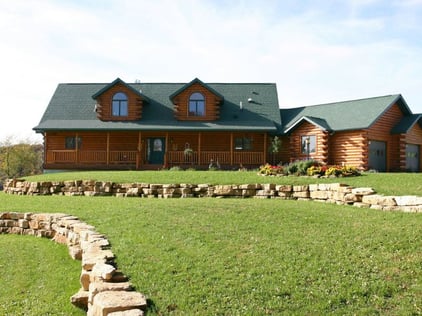 |
Cottage GardenThe origin of the cottage garden landscaping style goes back to the English cottage gardens of the 1400s. These gardens, which were primarily functional with vegetables, fruit trees, and herbs growing in designated areas, have evolved into a style that mixes ornamental and edible plants. Planting is the main feature of the cottage garden style, while other elements like furniture take a backseat. Cottage gardens are informal and are characterized by densely planted annuals that fill the landscape with blooms of all colors among perennials and shrubs. They can look both slightly unkempt or refined, according to the preference of the owner. Plants and grasses are also allowed to grow tall in this style. Since furniture is not the main focus of this style, a bench is generally tucked in a corner, with vines wrapping around its legs. Slightly weather-beaten or worn-in furniture fits better with the cottage garden style than modern additions. |
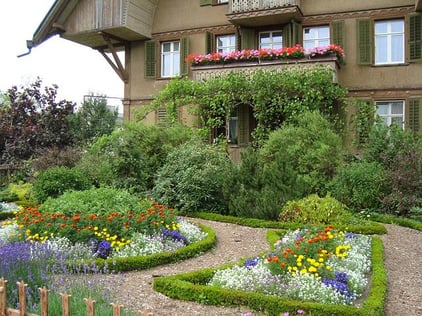 |
MediterraneanThough the Mediterranean style has Arabic origins, today, it mainly incorporates elements from the coastal regions of Italy, Spain, and France. Mediterranean design is all about using natural colors and organic materials and shapes. The Mediterranean landscaping style generally involves a water feature and rounded pavers that lead up to it, as stonework is also an integral part of this landscaping style. The color scheme is earthy with warm browns, greenery from the majority of plants, some pops of color from a few flowers, and commonly paired with light-colored buildings. The furniture is rustic with the imperfections of handwork and the elegance of old timber. Both drought-tolerant and flowering plants are used in this style, and they are either planted along the property’s walls to grow upwards or in planter boxes placed on brick walls. All-in-all, the Mediterranean style creates a warm and inviting atmosphere for everyone to enjoy. |
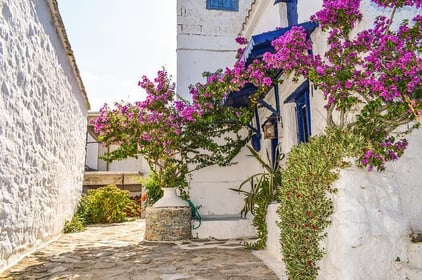
|
Standard TraditionalThe standard traditional landscaping style is a mix of the cottage garden and the formal traditional styles. The overall look remains structured but comfortable. A wider range of flower colors is used in this style compared to the traditional formal style. The paths in this style have more curves and are made with natural stone instead of hard concrete, and this adds more personality to the landscape. The furniture incorporated in this style should not look modern but have a slightly rustic look. Therefore iron or teak wood furniture is used. |
 |
Formal TraditionalThe formal traditional landscape style incorporates clear, geometrical lines. Everything is structured in this style - the plants are planted in neat rows, and the walkways and paths are straight and made with traditional construction materials like brick, concrete or bluestone. The planting does not involve a mix of many different colors and generally only a couple consistent colors throughout the entire landscape. Boxwood hedges are used instead of ornamental grasses to maintain the structured style. |
 |
Zen GardenA traditional Japanese garden, also known as a Zen garden, is designed to create a tranquil environment where one can spend time relaxing and getting away from the stresses of life. This style is inspired by Buddhist, Taoist, and Shinto philosophies and incorporates four main elements - water, rocks, ornaments, and plants. The design principles of balance, asymmetry, symbolism, and enclosure should be paid special attention to when creating a Zen garden. Some common water features of a traditional Japanese garden include stone basins, waterfalls, and koi ponds. If there is space in your outdoor space and your budget allows it, a bridge can also be incorporated into your landscape. |
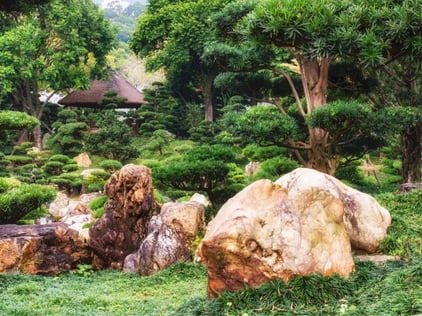 |
Conclusion
Down To Earth hopes at least one of these landscaping styles spoke to you and helped you define your own style. If you want to remodel your landscape to incorporate any of these styles or build a landscape from scratch, contact Down To Earth Landscape & Irrigation to help you start designing your landscape.
Our design process starts with understanding your vision and then proceeding with the discussion to make it a reality. We believe in constructing personalized landscapes that remain your pride and joy for years.

